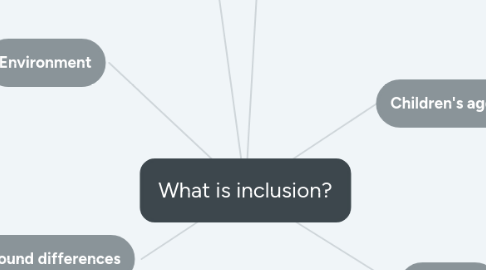What is inclusion?
by Sarah Drury

1. Defining inclusion
1.1. There is no one meaning as the term 'inclusion' relates to many different subjects and factors.
1.2. For example, it can relate to equality, rights and discrimination or prejudice. Inclusivity can be shown by a person, a group of people or a company/organisation. It can also be towards many different types of people.
1.3. Richmond et al (2016) p. 133
2. Background differences
2.1. There are often deep ingrained negative attitudes towards different groups. For example, gender, sexuality and religion all have stereotypes which lead to exclusion or prejudice.
2.2. Slee (2013) cited in Richmond et al (2016) p. 136
3. Environment
3.1. Children change their behaviour to 'fit in' with their peers and/or those around them. This shows the environment is exclusive as children should not have to change themselves, the environment should be the one to adapt.
3.2. Nesdale and Duffy (2011) cited in Cable et al (2016) p. 171
4. Relationships in school
4.1. Acceptance, genuineness and empathy all contribute to good healthy relationships. These relationships can be child-to-child or adult-to-child and both support children's wellbeing.
4.2. Rogers and Freiberg (1993) cited in Stacey, Hancock and Powell (2016) p. 114
5. A process
5.1. Inclusion can be thought of as a constant ever-evolving process. Adjustments occur over time to try and incorporate more participation.
5.2. Richmond et al (2016) p. 136
6. Children's agency
6.1. One of the rights of the UNCRC (1989) is that children have the right to have their voices listened to. This can be seen in schooling in the form of school councils. These are meetings where children from different groups discuss topics and aid change around the school. This is a very inclusive part of school.
6.2. Inman (2003) cited in Hancock et al (2016) p. 95


